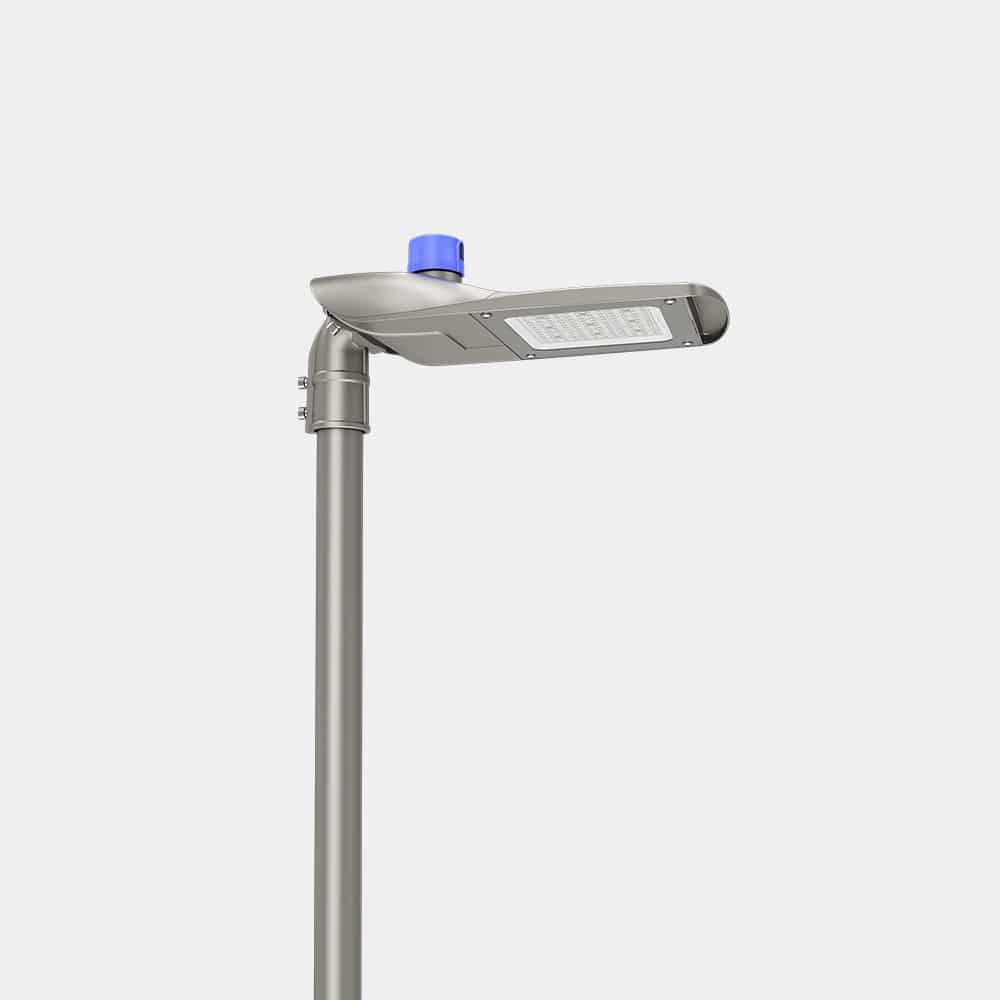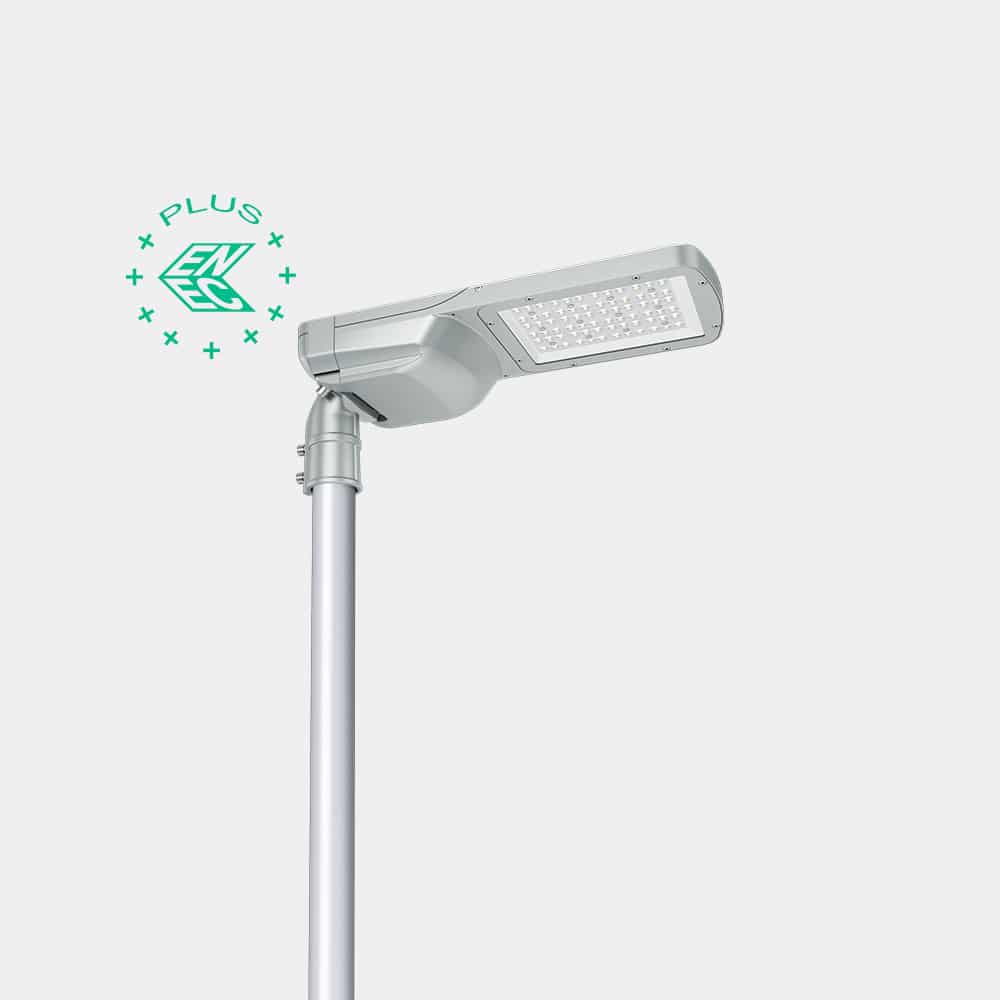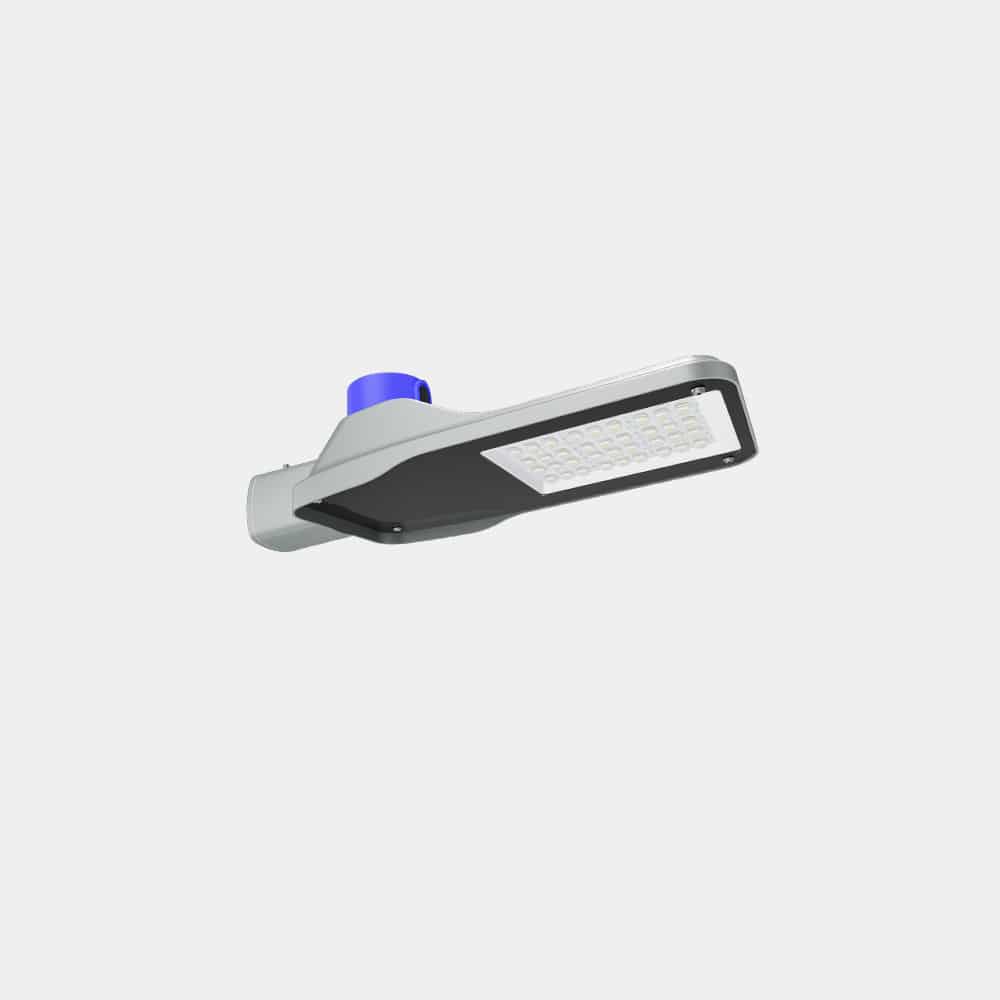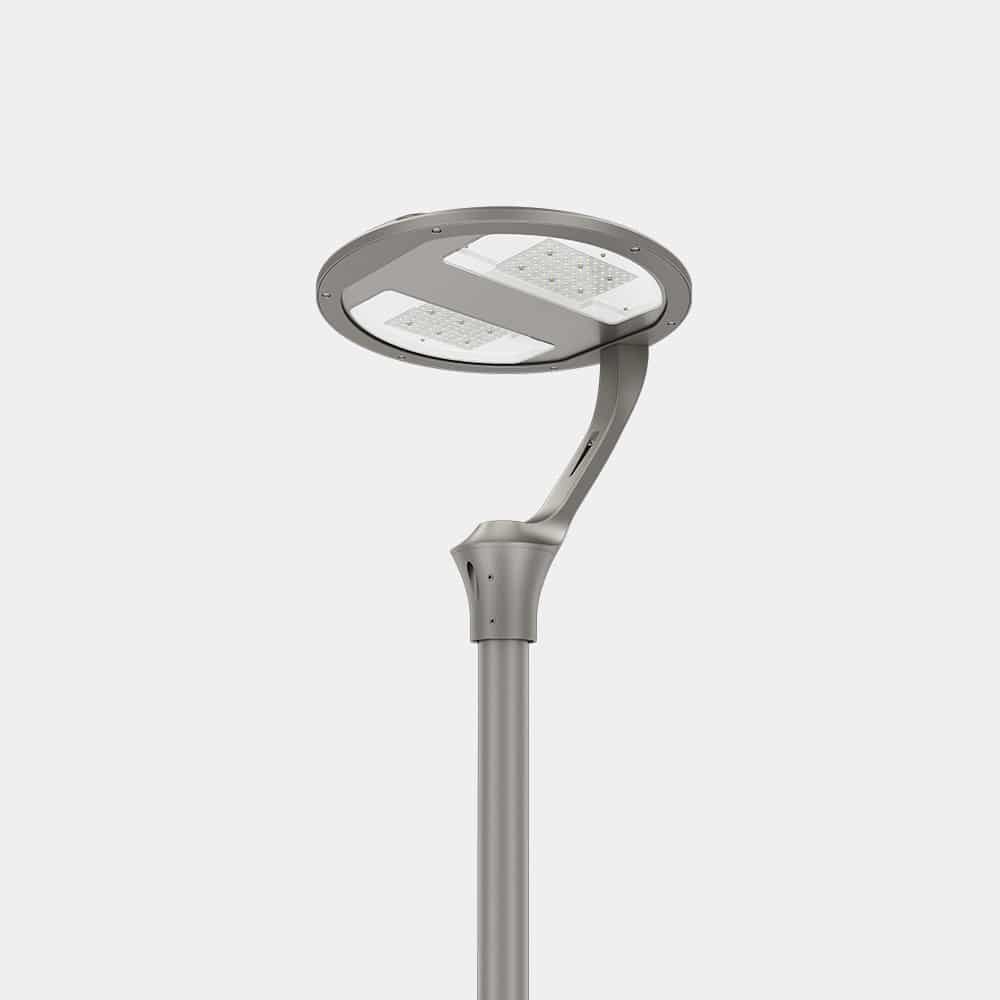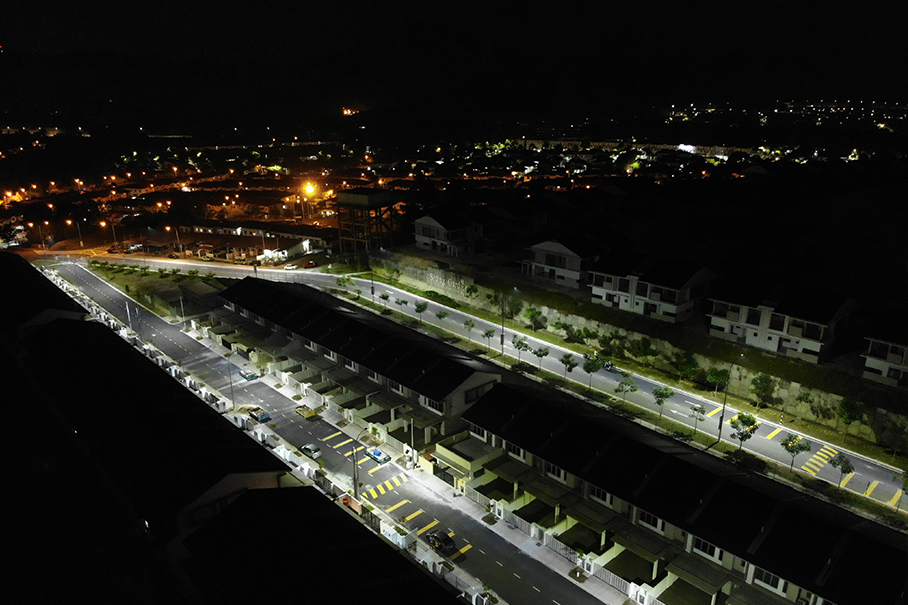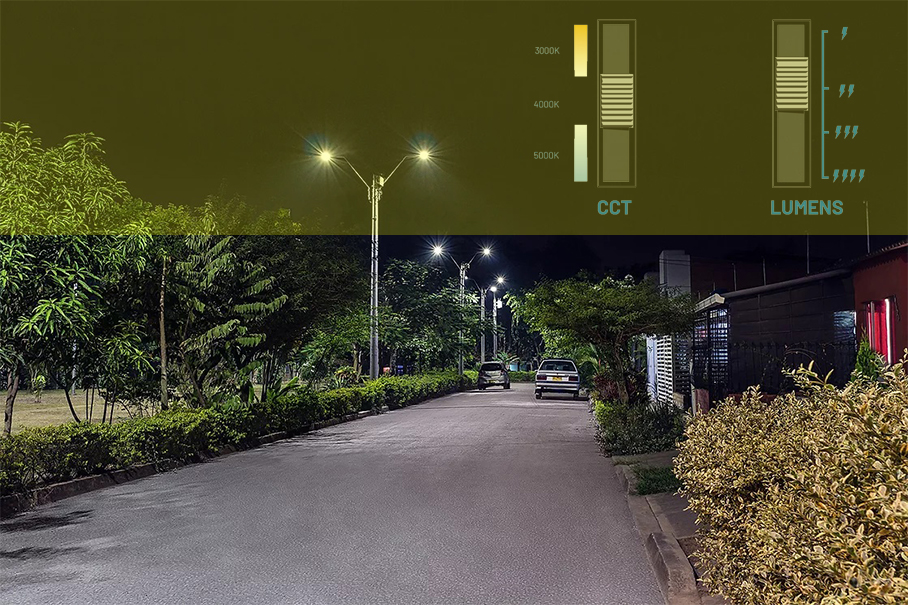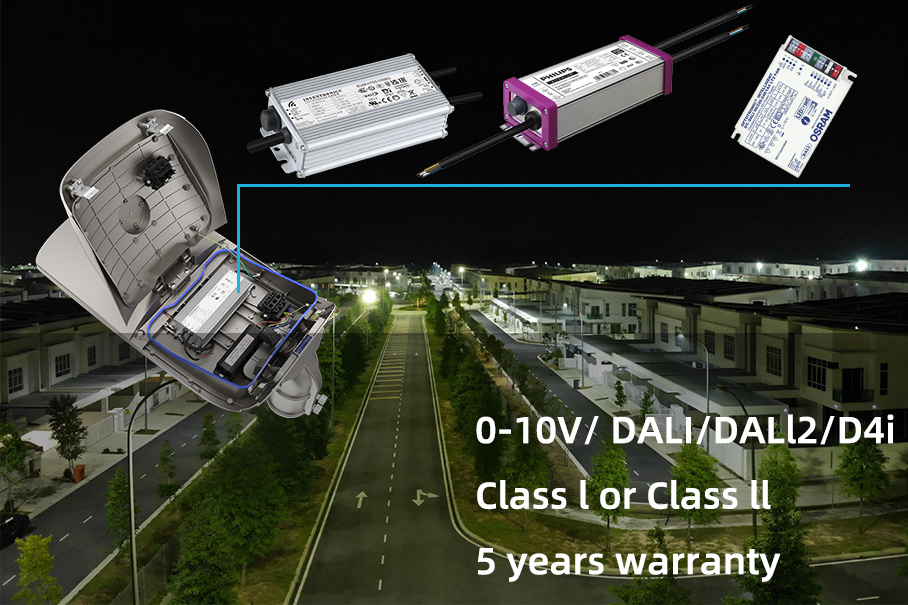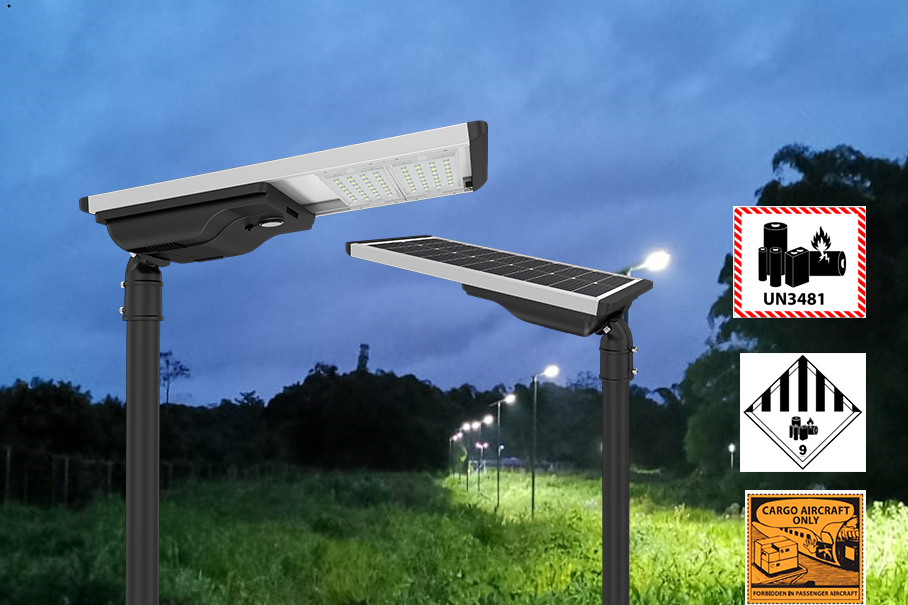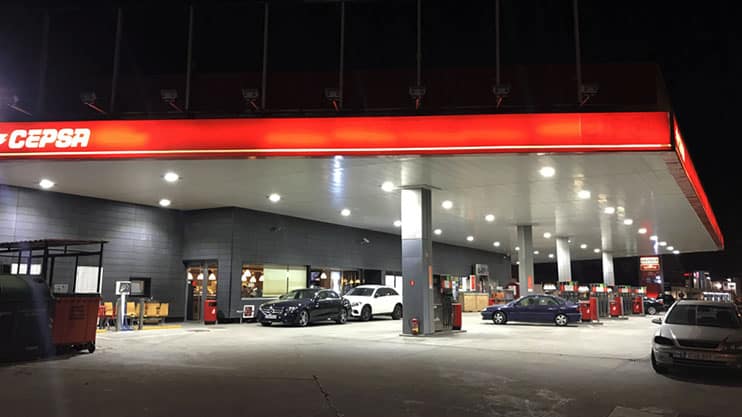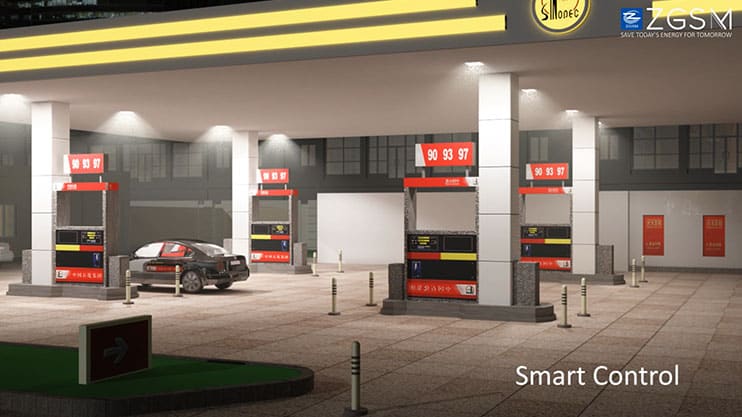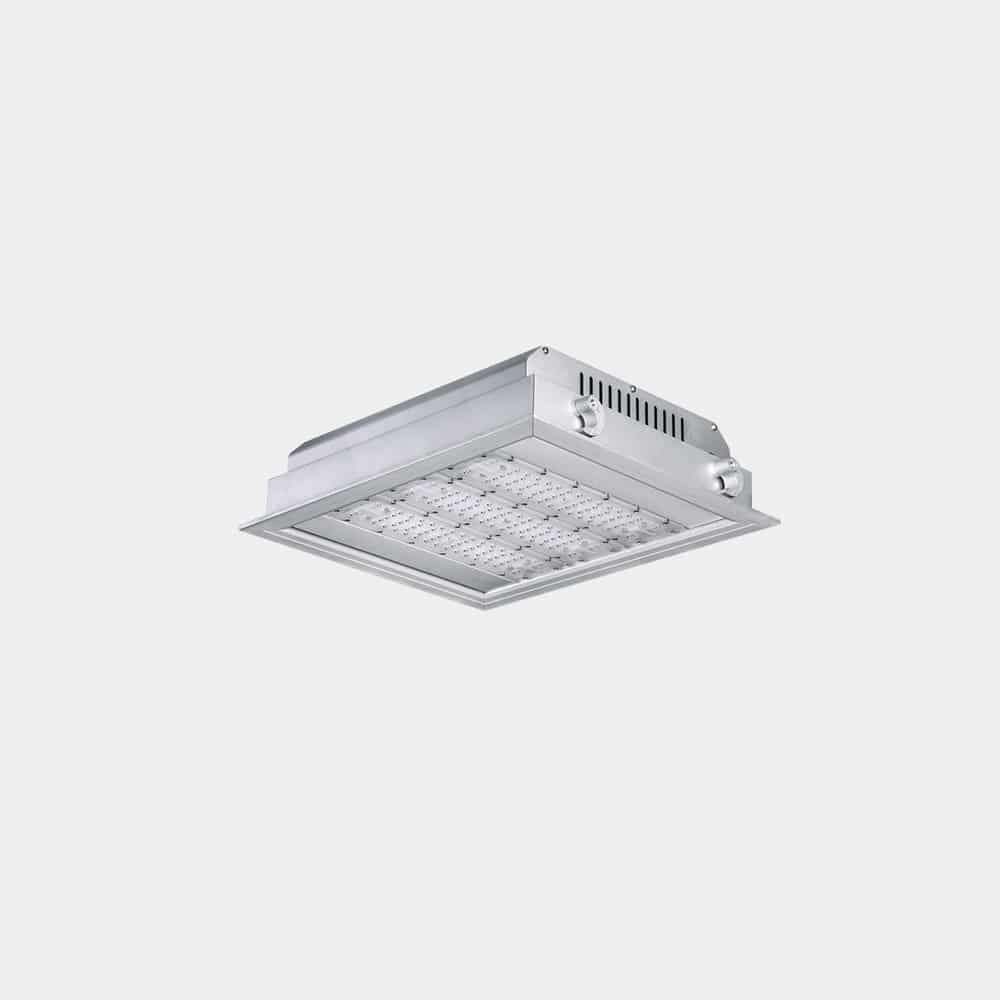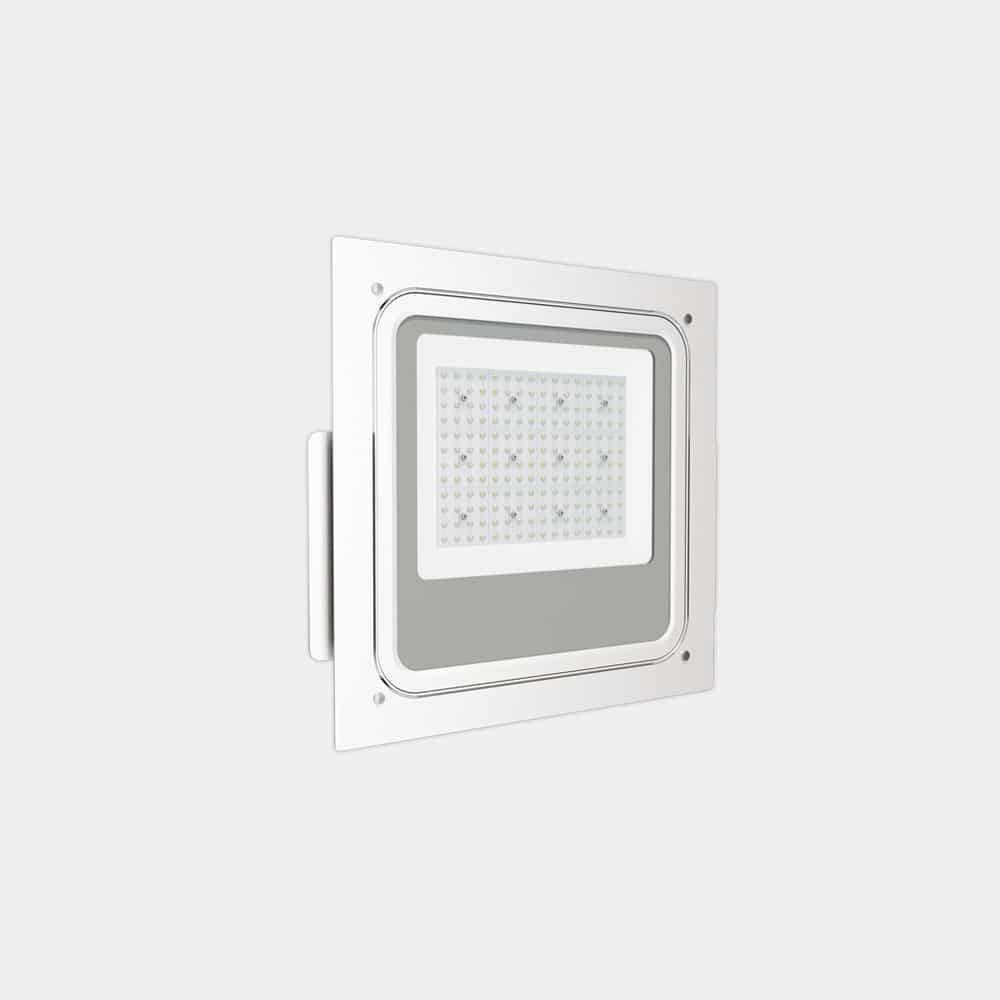Smart street light standardization – NEMA vs Zhaga

Taylor
Introduction
LED technology originated in the early 20th century, and after nearly 100 years of development, it has been gradually used in display screens, traffic lights, LED lighting and other fields. LED lighting includes household and commercial lighting such as LED bulbs, lamp tubes, downlights, and car lights, as well as public lighting such as roads, stadiums, parking lots, and parks. Public lighting mainly refers to road lighting. At the beginning of the 21st century, the advancement of LED technology gave LED street lights the potential to be widely used in the field of urban lighting. Some cities and regions have begun piloting or deploying LED street light projects to verify their energy-saving, reliable and efficient advantages. Since 2010, LED technology has continued to advance while costs have continued to decrease, which has made LED street lights gradually replace traditional lighting equipment such as high-pressure sodium lamps and halogen lamps, becoming the mainstream choice for road lighting. In the next stage, LED street lights will gradually become intelligent and standardized. Smart street lights can give full play to the energy-saving characteristics of LEDs. At the same time, standardization also facilitates the maintenance and replacement of LED street lights and the replaceability of related components.
Natural advantages of LED street lighting
Traditional street lighting usually uses high-pressure sodium lamps (HPS) or mercury vapor lamps (MH). The technology is very mature. However, compared with these two, LED lighting has many advantages of its own. It is mainly characterized by high light efficiency, long life, reasonable light distribution, easy control, and no pollutants. These advantages also make LED street lights very competitive in street lighting projects.
Low energy consumption
Research data shows that street lighting energy consumption generally accounts for about 30% of a city’s municipal energy budget. The low energy consumption characteristics of LED lighting can alleviate this high energy expenditure. After replacing traditional lamps with LED street lamps on municipal roads, electricity consumption can be greatly saved. In addition, street lights have a reasonable light distribution, which can reasonably distribute light on the road. While meeting relevant standards for road lighting, they can achieve the lowest energy consumption per unit area as much as possible, improve energy efficiency, and reduce carbon emissions.
Good lighting directionality
Traditional road lighting sources lack directionality. On the one hand, this will lead to insufficient lighting brightness in key areas. On the other hand, light will be scattered to areas that do not need lighting, causing light pollution. LED lights have excellent directionality and are equipped with reasonable lenses. They can illuminate a limited space without affecting the surrounding area.
High light efficiency
Compared with high-pressure sodium or mercury vapor bulbs, lamps with LED as light source have higher luminous efficiency, that is, they can produce more lumens per unit of power consumption. In addition, LED is a directional light source. When applied to road lighting, it can distribute most of the light onto the road. These allow the energy consumption of street lights to be better converted into useful light for the road.
Long lifetime
Compared with high-pressure sodium lamps, LED lamps generate relatively low heat when working, while most of the energy in traditional light sources will be converted into heat. Compared with traditional lamps, LED lamps have a lower operating junction temperature because they generate less heat, which makes them have a longer life. It is estimated that the service life of LED lighting arrays in road lighting can reach 50,000 hours or longer (over than 100,000hrs), which is 3-5 times that of high-pressure sodium lamps or metal halide lamps. This will eliminate the need for frequent replacement of LED lamps, thereby reducing subsequent maintenance and replacement costs.
More environmentally friendly
High-pressure sodium lamps and mercury vapor lamps contain toxic substances (such as mercury) and require special disposal procedures when discarded, which is time-consuming, labor-intensive, and not environmentally friendly; while metal halide lamps sometimes explode. On the contrary, LED lamps do not have the above problems, which makes LED lamps more environmentally friendly and safer in use and in their life cycle.
Highly controllable
The LED street light driving method converts AC/DC and DC/DC power supplies into the voltage and current required by the LED module. Although this increases the complexity of the circuit, compared with traditional AC lighting technology, LED technology has faster response and better controllability, that is, it can achieve effects such as fast switching and dimming. Its dimming function is the basis for realizing automated intelligent lighting. With corresponding intelligent control components, it is believed that LED street lights will be of great use in the construction of smart cities. In addition, the color temperature of LED lamps can also be achieved by dimming and dual-channel LED drivers. All of these are manifestations of the strong controllability of LED lamps, and a typical application is in smart street lights.
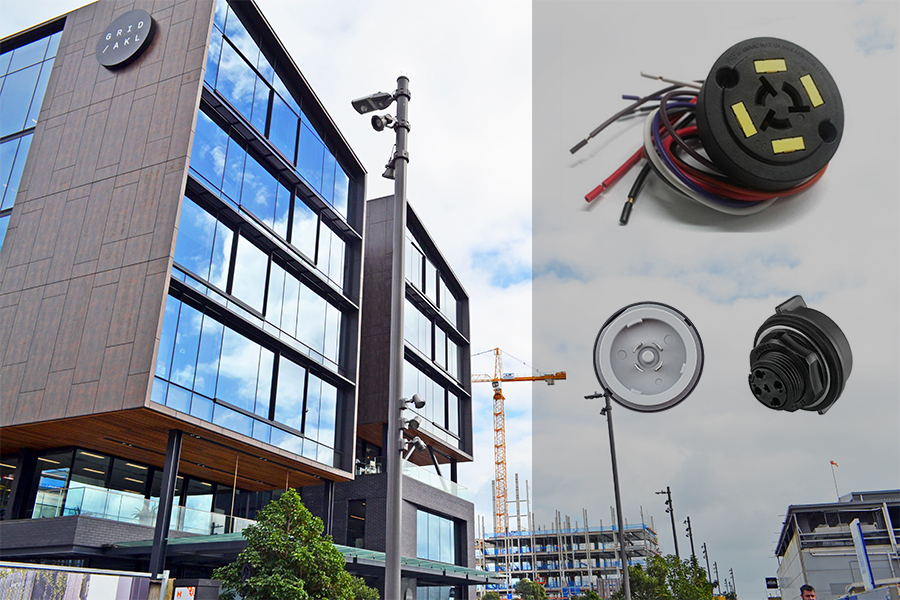
Two major trends in LED street lighting
Because of the above outstanding advantages, LED street lights have been widely used in urban road lighting in recent years and have gradually become mainstream. In the early stages of the development of LED street lights, the main development of LED street lights focused on structural design, light efficiency improvement, light distribution design, life extension, etc. Of course, there are still many opportunities for improvement in these areas, so special attention is still needed in the later stage. If LED street lights want to continue to develop, there is still a lot of room for energy saving and high efficiency, real-time control, convenience and easy replacement, and smart cities. It is worth noting that this technological upgrade of LED street lights is not a simple “replacement” of traditional lighting equipment, but a systematic change. In the process of this change, two trends worthy of attention have emerged – intelligence and standardization.
Smart street light
One of the development trends of LED street lights is intelligence. As mentioned earlier, LED lights have strong controllability, which makes it possible to automate smart street lighting systems. In this street light system, a precise algorithm based on environmental information (for example, ambient light) realizes automatic adjustment of street light switches and brightness without manual intervention. With development, it can have the ability to learn (such as sensing the existence and activities of people or things, etc.) to realize intelligent control of lamps. In addition, as a covering urban infrastructure network, street lights themselves may become more intelligent edge nodes of the Internet of Things, which allows LED street lights to have more additional functions (such as weather, air quality monitoring, Wifi nodes, etc.), making them more popular in the Internet of Things, which plays a more important role in smart cities. D4i and Zhaga (NEMA) are two of the highlights when it comes to these.
Street light standardization
One of the development trends of LED street lights is standardization. We can imagine that the trend of LED street lights developing towards intelligence will inevitably pose new challenges to LED street light design – the LED street light system will be more complex. It will require street lights to include LED modules, drivers, sensing, control, communication and other functions and more extended functions when the appearance space is limited. If we hope that LED street lights can meet this challenge, standardization is the only way out, and it is also another important development trend of current LED street lighting. The advantage of standardization is that it can enable more technology suppliers’ functional modules to be seamlessly integrated with LED street lights, thus greatly improving the scalability of the system. Common ones include dimming function, NEMA, Zhaga, D4i (including data transmission).
Intelligence promotes standardization, and standardization promotes the deepening of intelligence. The interaction of the two trends promotes the continuous evolution of LED street lighting technology and applications.
The evolution of smart street light architecture
The evolution of LED street light architecture is largely influenced by industry standards, of which NEMA(National Electrical Manufacturers Association) and Zhaga are the two main standards organizations. These standards organizations promote the standardization and interoperability of LED street light architecture and promote the development of LED lighting products. The standardization of street lighting has been around for a long time. The most familiar one is the ANSI C136 standard, which is widely used in many parts of the world. Many street lights today are produced according to this standard. In recent years, the Zhaga standard has begun to gradually appear in the eyes of industry workers. Of course, in addition to the interface of the controller, Zhaga also standardizes the standards of other components (LED modules, lenses, power supplies, controllers, etc.). We will explain one by one below.
ANSI C136.10
The original street lights used traditional lighting fixtures, and the control logic was very simple – turn them off during the day and turn them on at night. This can be achieved with only a photocell (light controller). In order to achieve the interchangeability of control units such as light control, the ANSI C136.10 standard defines a common platform and standard interface for road lighting equipment, namely NEMA socket. It enables standardization of sockets for light controllers based on AC line voltage and 3-pole connection, i.e. NEMA sockets from different suppliers and different light controllers can be used interchangeably. The standard interface developed based on ANSI C136.10 gradually became the standard in the industry after 1988. The following is a specific diagram.

ANSI C136.41 NEMA socket in smart street light
You may find that the ANSI C136.10 standard can only meet the non-dimmable control architecture of 3-pole light controllers. And with the application of LED technology to street lights, people are increasingly demanding high energy efficiency. Therefore, street lights equipped with dimmable functions are increasingly appearing in the eyes of industry players. However, ANSI C136.10 does not put forward requirements for dimming lines. A new standard and architecture need to be proposed to fill this gap. This new standard is ANSI C136.41. The ANSI C136.41 architecture adds signal output contacts to the 3-pole line voltage connection. In addition to connecting the grid power supply to the ANSI C136.41 light control system, the architecture can also accept logic voltages from other devices. This voltage signal can be output to control the switching power supply in the system, thereby achieving control and adjustment the brightness of LED lamps. This standard is compatible with the original lighting system and uses wireless communication technology (that is, converting wireless communication models into voltage signals) to provide an economical and reliable solution for smart street lights. Specific diagram can be seen in above pictures, while the wire connection can be seen below.
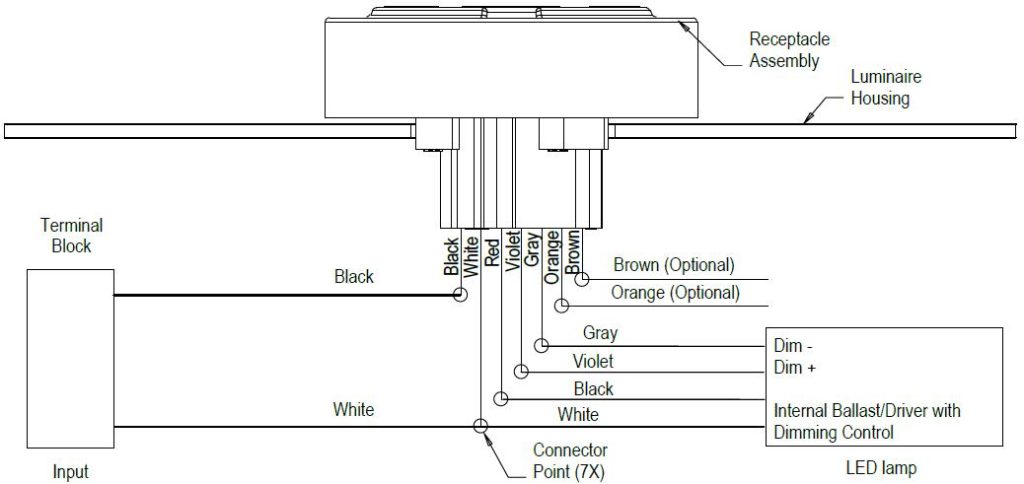
Zhaga socket(Zhaga book 18) in smart street light
The ANSI C136.41 standard, commonly used for roadway and area lighting, specifies 7 contacts (each connected with 305mm leads), 14 AWG wire for use on three-wire voltage AC circuits, and four signal dimming wires (on DC circuits) is with 18 AWG wire. Socket assemblies are also available with 2 or 4 dimmer control pad contacts. In the case of 2 contacts, then it’s a 5pin NEMA socket. However, the ANSI C136.41 standard is not perfect. For example, it does not support the input of sensor information, which limits the implementation of more automated street lighting systems. To put it simply, although the 7pin NEMA socket has 4 dimming contacts, it only stipulates that the other two contacts can be connected to the LED driver to achieve dimming, but there is no explanation for the other two contacts. It can be used with microwave and other sensors, but it does not explain how to use it.
To this end, Zhaga, the global lighting industry alliance, has launched the Zhaga Book 18 standard specially developed for outdoor lighting. This standard introduces the D4i protocol of DALI-2 to solve the design of communication bus in lighting systems and solves the wiring problems that plague developers. An obvious difference between the Zhaga Book 18 standard and ANSI C136.41 is that the PSU is no longer integrated into the light controller assembly, but is integrated into the lamp as part of the LED driver or as a separate component. This architecture simplifies the wiring of lighting equipment control nodes and supports a new “dual-node architecture”, that is, in the street light system, one node device connected upwards serves as a photocell control or communication node, and the other node device connected downwards Nodes can be used for downward motion or other types of sensors. In this way, a complete intelligent street light system is basically formed, and the expansion of its control, communication, sensing and other functions can be easily realized by accessing standardized modules.

Zhaga socket combined with NEMA socket in smart street light
Some LED street lights use a combination of NEMA and Zhaga standards to achieve greater interoperability and scalability. For example, a streetlight might use a NEMA-standard luminaire housing and mounting interface, while using Zhaga-compliant replaceable LED modules. This combination can provide users with greater flexibility and choice while ensuring the safety and performance of LED street lights.
It is worth noting that this dual-node architecture of Zhaga Book 18 is not the end of the evolution of LED street lighting architecture. In recent years, a “hybrid dual-node” architecture has been developed that combines the advantages of ANSI C136.41 with the convenience of Zhaga-D4i and an open architecture. “Node architecture” is on the rise again. Simply put, the node devices on the hybrid dual-node architecture upwards are light control or communication nodes connected by a 7pin ANSI C136.41 interface(Some says it’s 4pin NEMA socket-ANSI C136.58, no conversion of grid power to the LED driver), either from the auxiliary PSU, the driver internal/external or DALI The bus powers the ANSI C136.41 nodes; the downward facing nodes still act as sensor input devices and are connected via the Zhaga Book 18 interface. The street light system based on this structure further simplifies wiring and can make full use of standard ecological resources such as ANSI and Zhaga.
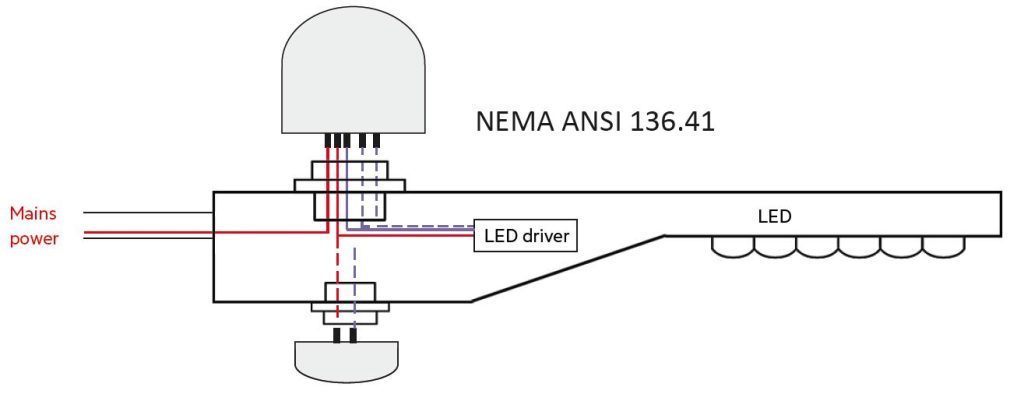
Obviously, with the evolution of LED street light architecture, the technical options before developers have become more abundant. People can choose the most appropriate architecture based on actual design needs to upgrade the street lighting system. Moreover, thanks to the advancement of standardization, there are now more and more LED lighting components and functional components on the market that comply with ANSI or Zhaga standards, which will make the intelligent journey of LED street lighting systems smoother.
Difference between NEMA and Zhaga in smart street light
What is the difference between NEMA and Zhaga? Generally speaking, the lighting fixture with Zhaga may be more expensive because it requires a D4i LED driver which has enhanced capabilities of smart street light. In order to achieve more functions, street lights with NEMA controller often require more components, which will inevitably lead to a larger physical size of the lamps. In addition, Zhaga controllers are usually much smaller than traditional NEMA controllers. Zhaga sockets and controllers are usually only half to one-third the physical size of NEMA sockets and controllers, and the cost is relatively low, but their power supplies are more expensive. Furthermore, Zhaga’s interoperability and the compatibility is higher. Below is a comparison between the two of them.
ZGSM smart street light with NEMA/Zhaga
All ZGSM street lights can be equipped with NEMA or Zhaga sockets, which makes them smart street lights. The NEMA base can be 3pin, 5pin or 7pin to install light control, or controllers such as Zigbee/LoRa. With the use of D4i’s LED driver, our lamps can also be installed with Zhaga sockets, which makes smart ready. Currently, ZGSM is also actively applying for Zhaga-D4i related certifications. It is believed that ZGSM’s street lights will soon be certified with Zhaga-D4i dual logos.
Summary
This article mainly introduces the development trends of LED street lighting. The development trend of LED street lights is destined to move closer to intelligence and standardization. In this process, NEMA and Zhaga play this important role. NEMA specifies the relevant standards for 3pin, 5pin and 7pin NEMA sockets. Street lights with 3pin NEMA socket are suitable for use with ordinary light controllers. Street lights with 5pin or 7pin NEMA base are suitable for wireless controllers. They often have additional dimming lines to ensure that the power supply accepts the converted dimming signal (voltage signal or Dali signal) to achieve dimming. Zhaga supports a new “dual-node architecture”, that is, in the street light system, one node device connected upward is used as a photocell or communication node, and the other node connected downward can be used for downward viewing movement or other type of sensor. Normally, Zhaga socket is often used together with the D4i driver, that is, the Zhaga-D4i lamp has both the Zhaga interface and the D4i function. Both of them played an important role in the development of smart street light. If you are interested in these features, you can also contact us for more information.
FAQ
Related Posts
Guide for canopy light with battery backup
Tags:
Author

Taylor
Sales Engineer
I am Taylor, with 10 years of experience in lighting sales. Throughout my career, I have developed a deep understanding of the lighting industry and its products. My expertise lies in building strong relationships with clients, understanding their needs, and providing tailored lighting solutions that align with their requirements.
